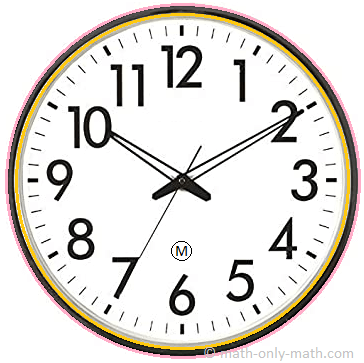Subscribe to our ▶️ YouTube channel 🔴 for the latest videos, updates, and tips.
Units of Time
There are different units of time.
Second, minute, hour, day, week, month and year are the units of time.
These have the following relations between each:
60 seconds = 1 minute
or
1 minute = 60 seconds
60 minutes = 1 hour
or
1 hour = 60 minutes
24 hours = 1 day (day + night)
7 days = 1 week
12 months = 1 year
52 weeks = 1 year
365 days or 366 days make a year
10 years make a decade
50 years make half century
100 years make a century
These are the relations between units of time.
So far we have studied the clocks having two hands – an hour hand and a minute hand. Some clocks and watches have a thin and long hand which moves faster than the other two hands called the second hand.
The second hand moves round the clock face in one minute. That is, it covers 60 small divisions in one minute. The time taken by it to move from one small division to the next is one second.
Thus, 60 seconds = 1 minute
Note: Minutes and seconds are symbolically represented with a single and double strokes at the top right of the numbers.
20 minutes = 20’, 20 seconds = 20”
Related Concepts
● To Measure the Length of a Line-segment
● Examples on Unit of Mass or Weight
● Units for The Measurement of Capacity
● Examples on Measurement of Capacity
● Antemeridian (a.m.) or Postmeridian (p.m.)
● Calendar
● Reading and Interpreting a Calendar
4th Grade Math Activities
From Units of Time to HOME PAGE
Didn't find what you were looking for? Or want to know more information about Math Only Math. Use this Google Search to find what you need.



New! Comments
Have your say about what you just read! Leave me a comment in the box below. Ask a Question or Answer a Question.